The evolution of remote control
Once upon a time you had to get up to switch channels on a TV. But since laziness is the main reason for progress, people quickly realized that it was necessary to somehow click channels without using younger brothers, sons and grandchildren.
In this post - about the remote control, from wired and ultrasonic devices in the 1950s to modern smartphones.
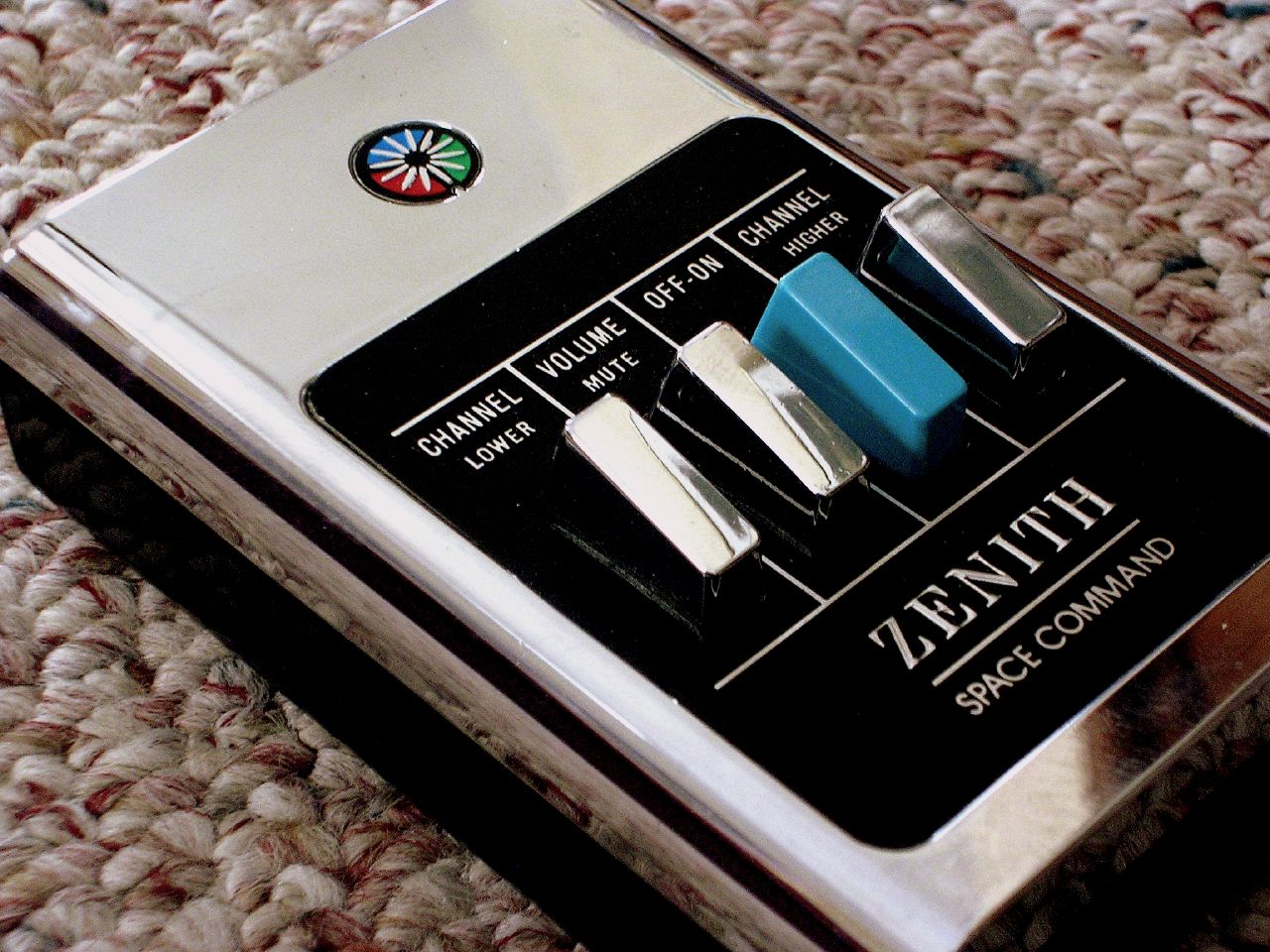
Introduced in 1950, a remote control called “Lazy Bones”, or “Lazy Bones” in Russian, made it possible to remotely switch channels on a TV in both directions, as well as turn it on and off.
The only negative - the remote control was attached to the TV.
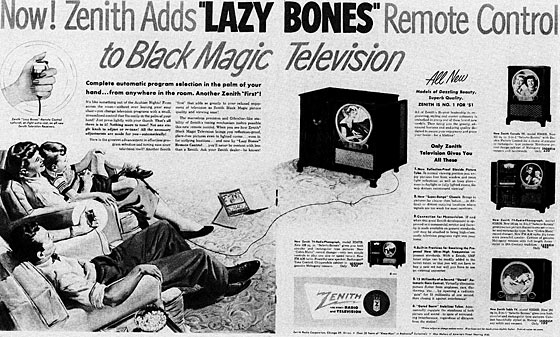
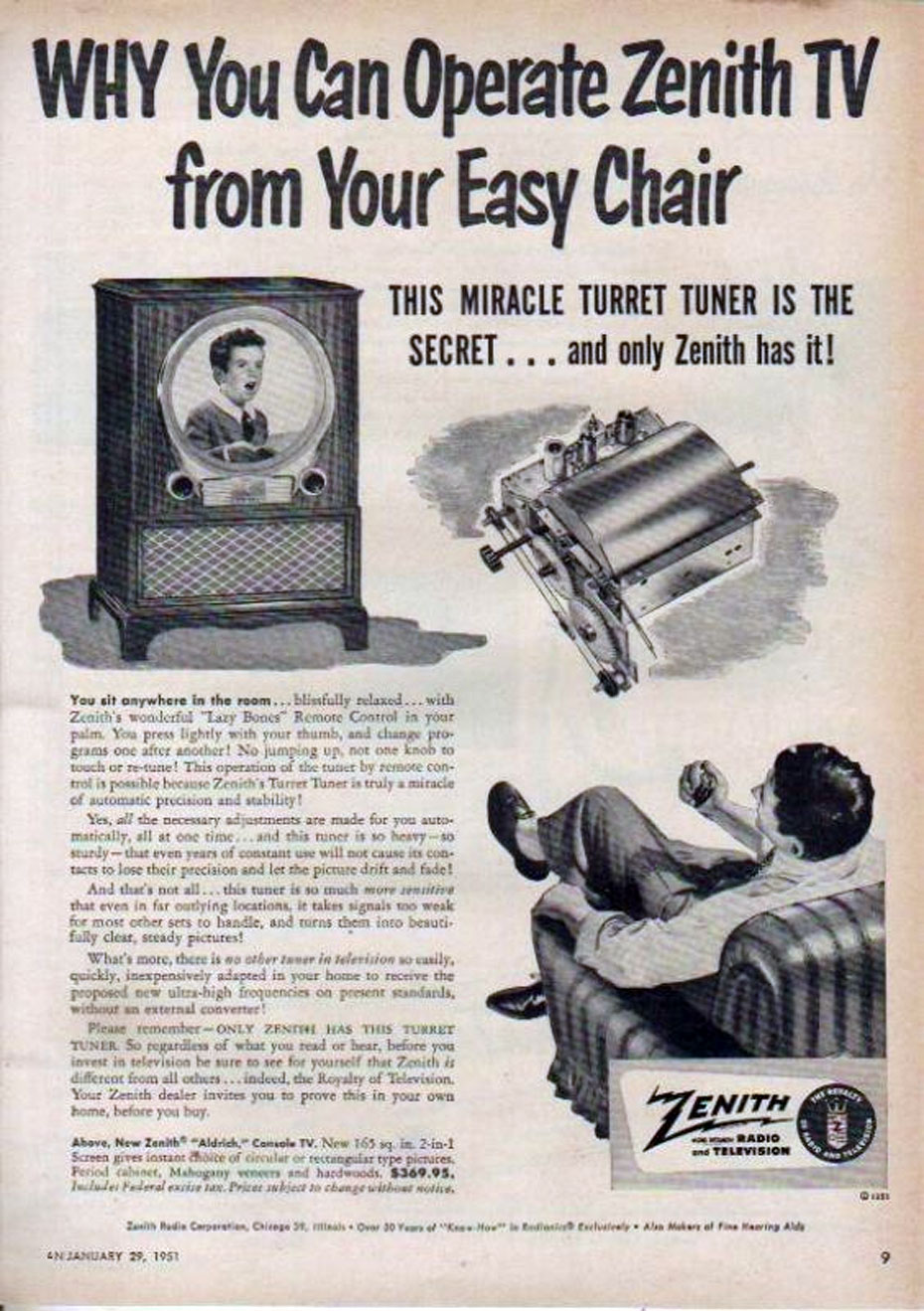
However, after five years, this minus was able to get rid of along with the wire. Flash-Matic was the first truly wireless remote control. The device looked like some kind of gun from science fiction films and connected to the corners of the TV using flashes of light. Each corner was responsible for a certain action, so that by aiming at the desired area, one could make the sound louder or quieter or switch channels.
The system had its drawbacks: bright lamps and intense sunlight could affect the TV as well as this remote control.
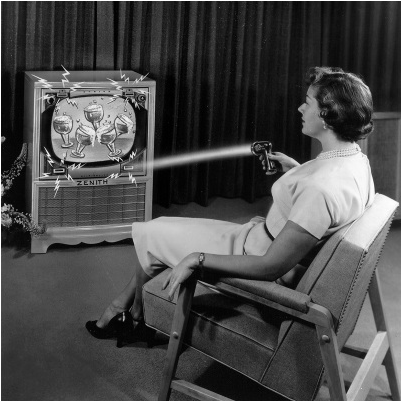
What to do with this bug? Zenith decided to use ultrasound instead of light. When a button was pressed, a small hammer hit the plate, reproducing an ultrasonic signal. The buttons helped switch channels and control the sound.
This technology had a great bonus: no batteries!
Look, gracie! With the Zenith Space Command TV I can change channels on the TV across the room ...


the Zenith Space Commander 600

In the 1950s, the majority of the remote control have been designed to work in tandem with the specific model of TV. This allowed the Alliance of Manufacturers to create a universal module. Using the DIY kit, you could add a module to any TV, and then switch channels from a distance of seven meters.
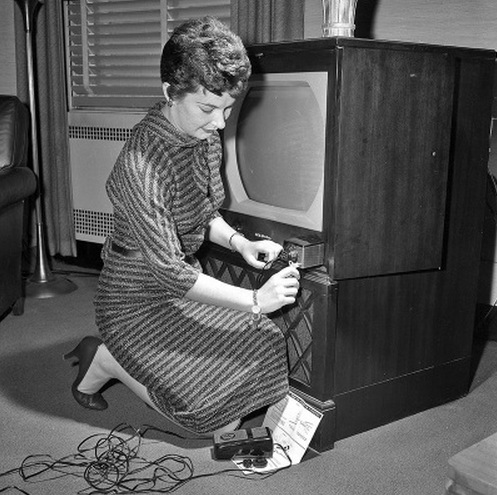
Unification came thanks to the advent of cable television. The cable box in the 1970s had a wired remote.
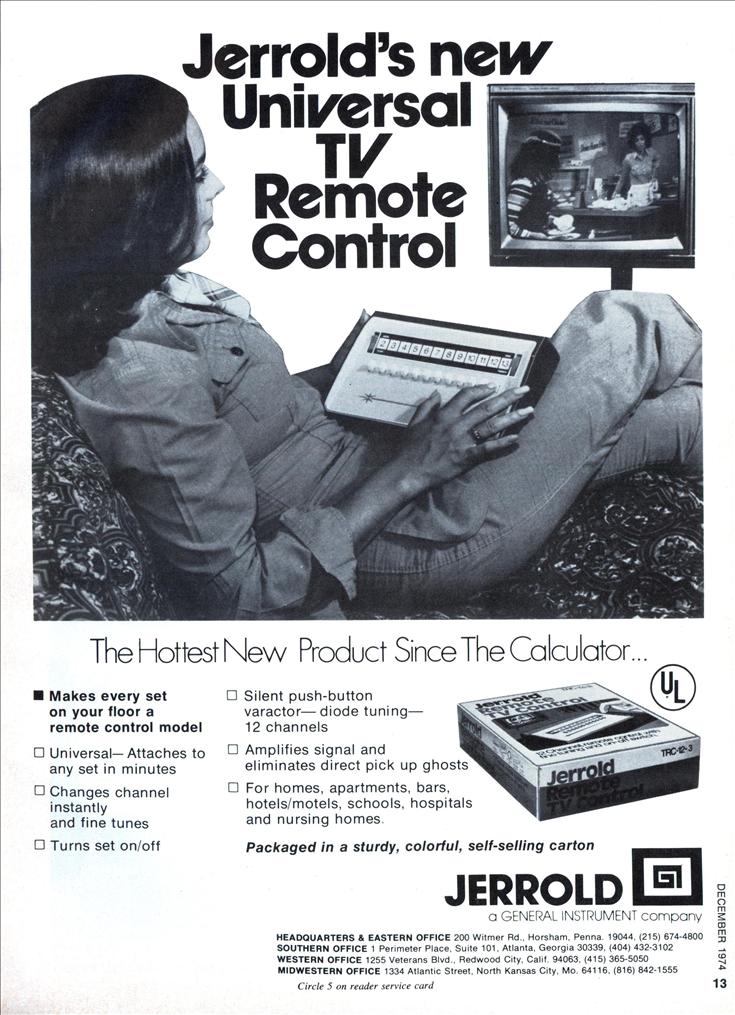
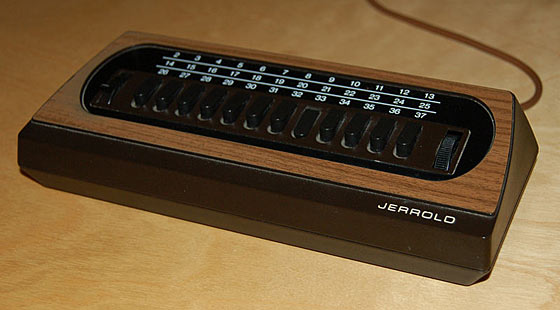
In the early 1980s, fashion technology was set by the manufacturer of Hi-End audio and video equipment Bang & Olufsen. The company has moved from ultrasound to infrared radiation. Remotes of this type controlled all Beovision TVs of that decade. With their help it was possible to read teletext.
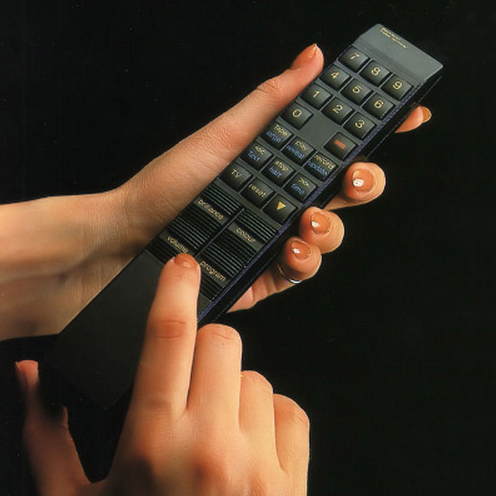
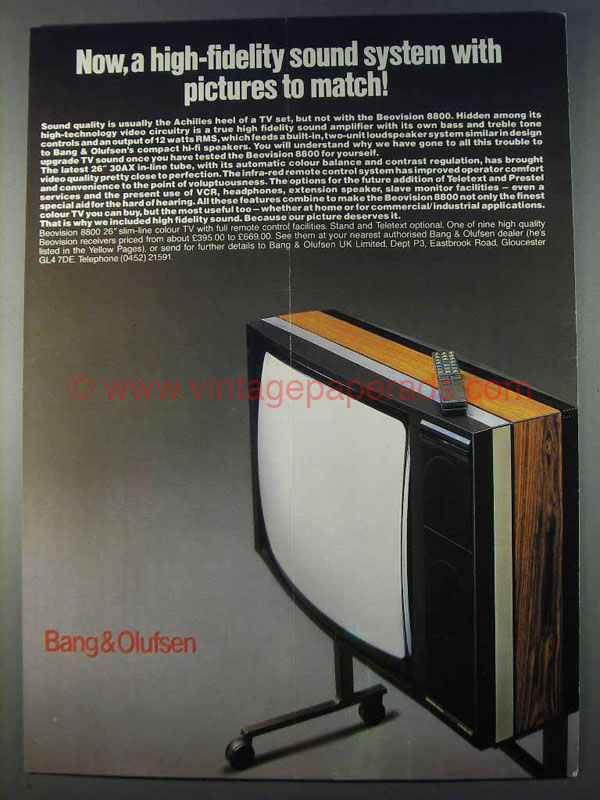
In 1983 in the USA Jerrold again entered the arena with its cable consoles. This time, infrared radiation was also used. And the console had a digital display.
Steve Wozniak of the eighties developed a remote control "for everything." LC9 was created for production. Core (Controller of Remote Equipment) could memorize the patterns needed to control other devices. But he had a drawback: the device was not simple enough, the interface was not intuitive for the average consumer.
Also, sales were affected by the fact that large manufacturers began to produce such devices at lower prices one after another.

In the nineties, Core revived, but another manufacturer and under a different name - Celadone PIC100. Later, development was used in medical equipment by companies such as Siemens and General Electric.
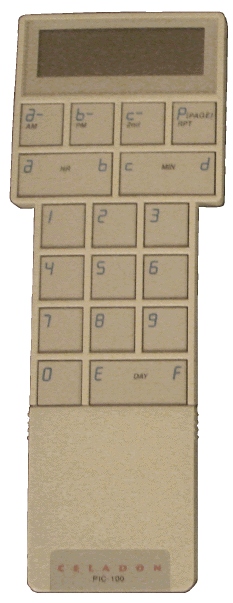
In the years 1980-1990, almost every television, VCR and music center included a remote control. And this led to the creation of a huge army of universal remotes suitable for all audio-video devices.
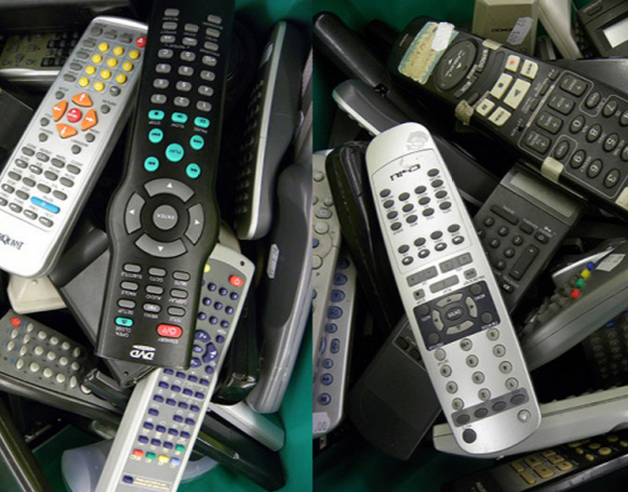
In the mid-nineties, even touch displays began to be used in consoles. For example, Philips Pronto TS-1000 had only a couple of physical buttons, and all control was carried out by clicking on a monochrome touch screen.
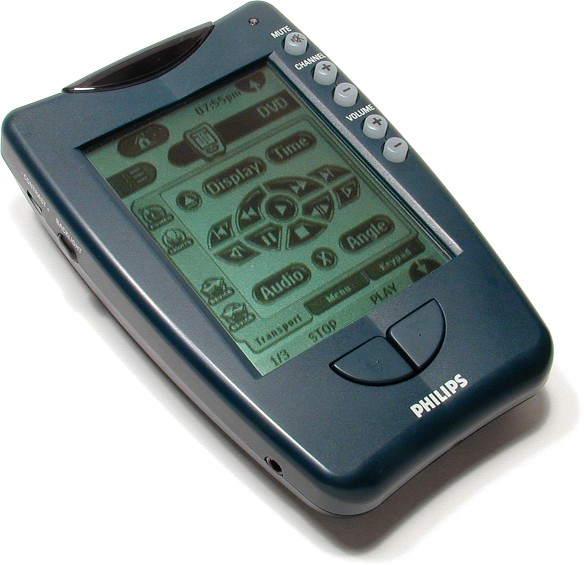
A series of similar devices from Sony had more buttons and a slightly smaller display. The capabilities of both of these gadgets were similar to the capabilities of Core from Steve Wozniak.

Years passed, and Bang & Olufsen all did not let up. By 2008, they showed a new remote in which they combined a color touch screen and familiar buttons into a device with a futuristic design.
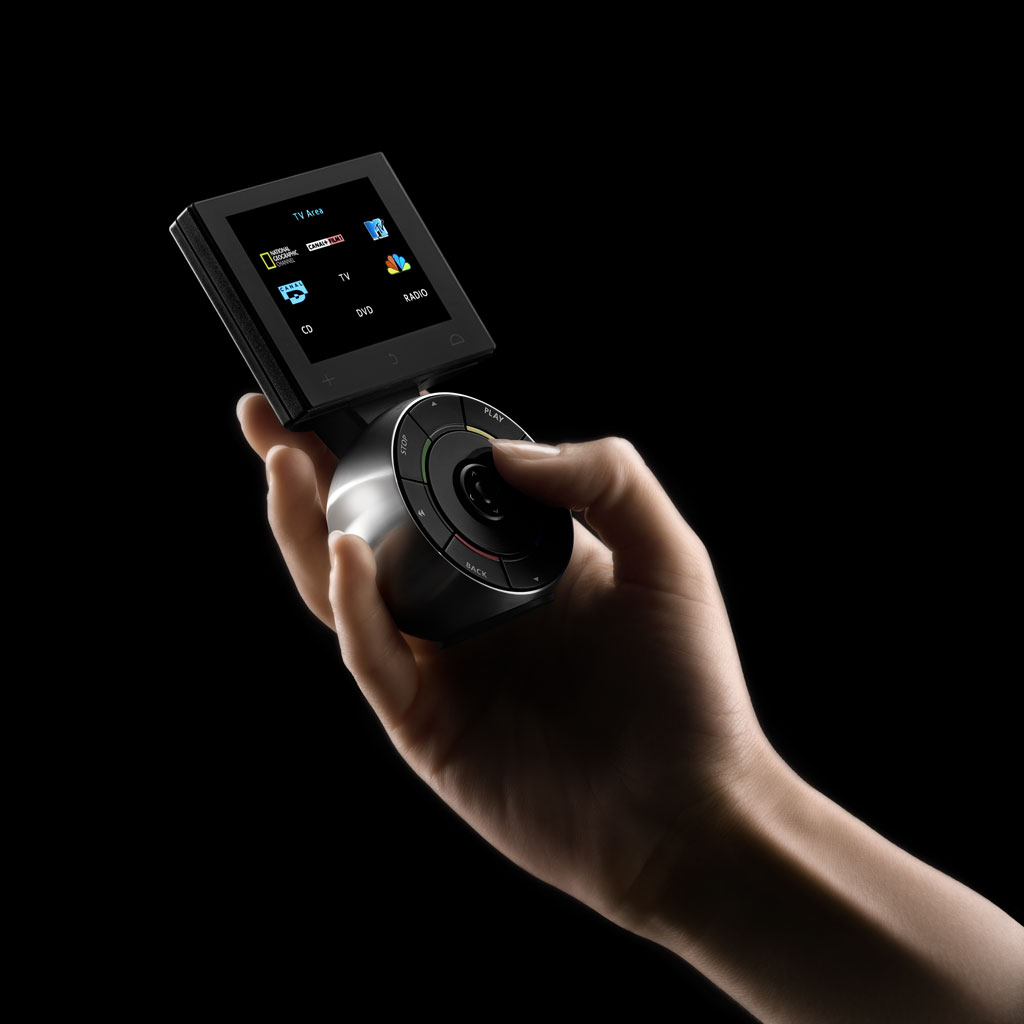
Apple in 2010 created just such a simple remote for Apple TV. A device made of aluminum weighs almost nothing.
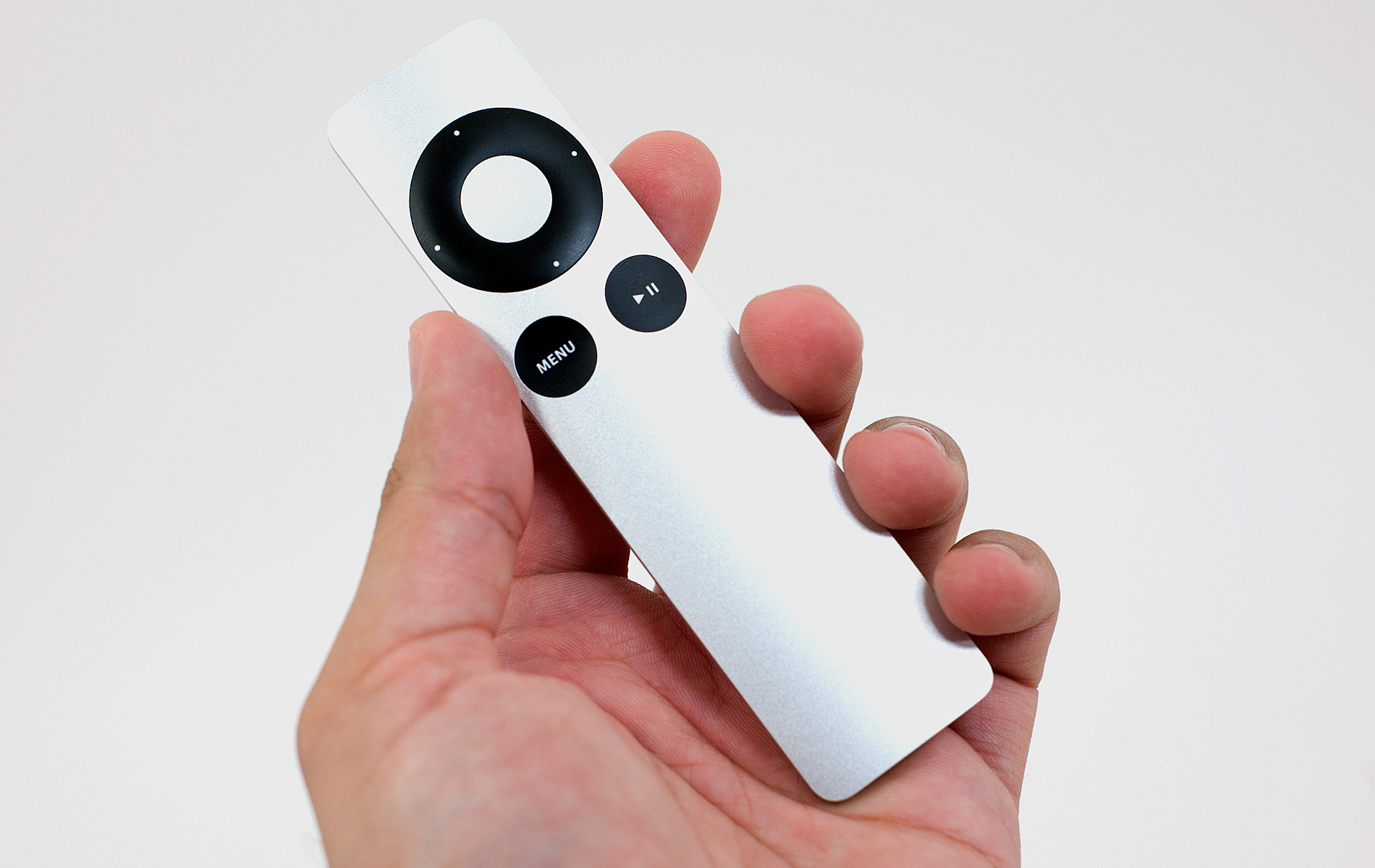
Game consoles for many years occupy an important place in the homes of many people. So why not use joysticks from consoles to control home devices?
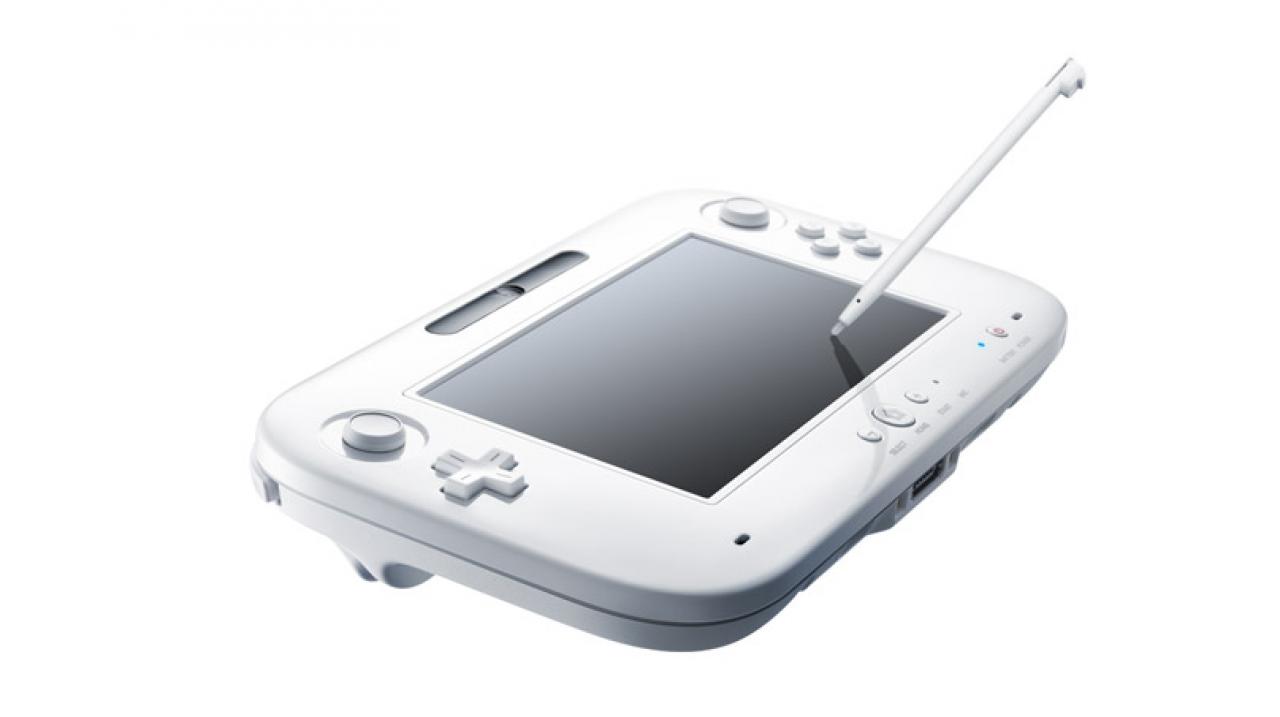
When Google TV was launched in 2010, many manufacturers tried to decide in which form factor the remote control should be made. Logitech made a full-sized keyboard, Sony introduced a controller with an infinite number of buttons.
The Sony NSZ-GS7 Internet player included a touch pad, function keys, and a qwerty keyboard, but it all fit in a device the size of a PDA.
Voice control appeared in 2013 when Sony revealed the NSZ-GS8. To search the Internet and among applications and switch channels, you just had to talk with the remote control.

In 2011, the sixth generation of ADSL modems from the French provider Free appeared. The remote control that comes with the kit uses ZigBee technology - it uses radio waves rather than infrared radiation to transmit signals.

One of the components of the Freebox kit.
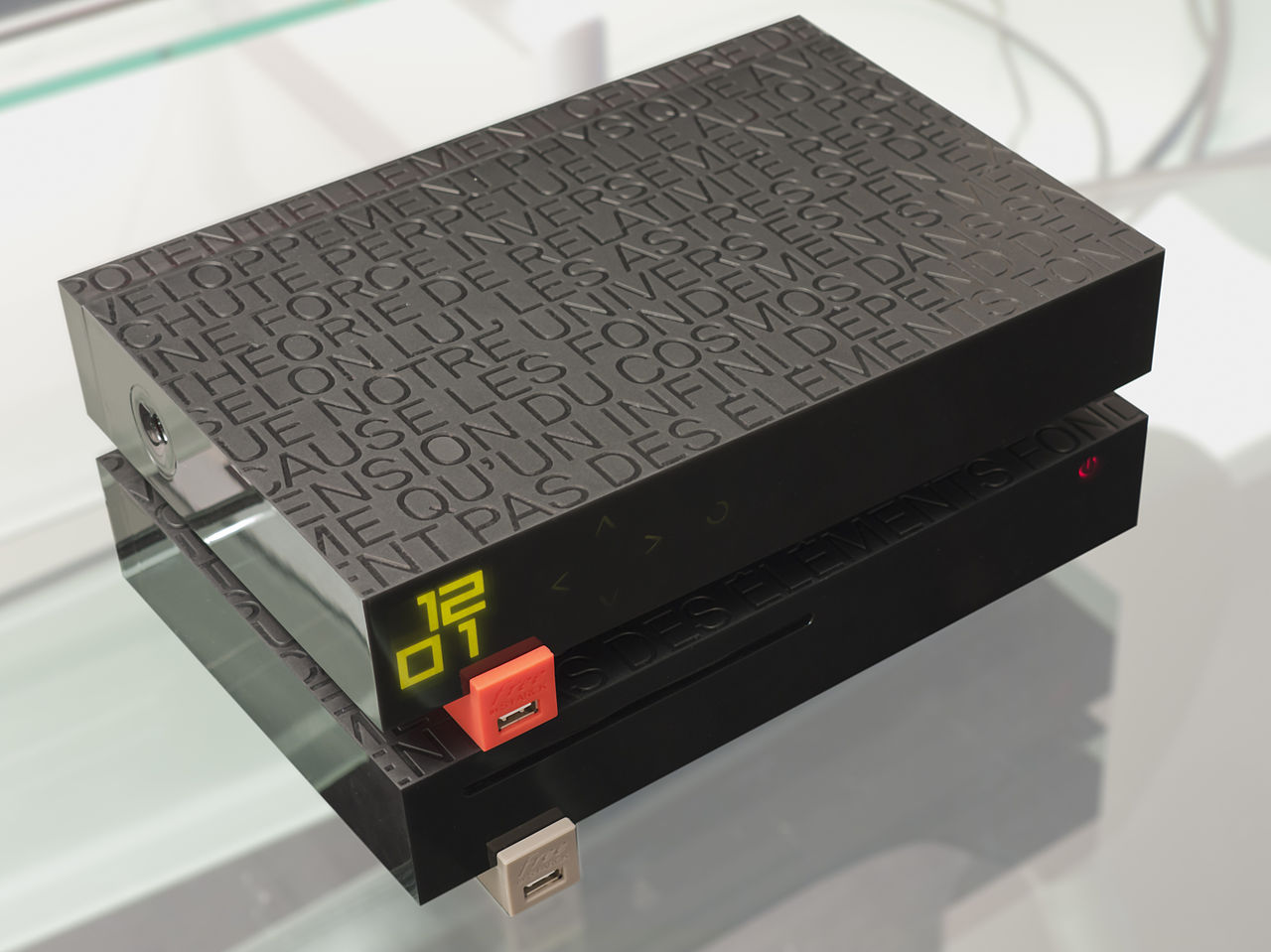
Many functions from various gadgets of the past are now placed on our smartphones. So phones and tablets help manage your smart home. There are also devices that serve as conductors between a smartphone and a TV or music center, receiving signals from gadgets and sending them to the necessary devices. One example is Harmony Ultimate.

In this post - about the remote control, from wired and ultrasonic devices in the 1950s to modern smartphones.

Introduced in 1950, a remote control called “Lazy Bones”, or “Lazy Bones” in Russian, made it possible to remotely switch channels on a TV in both directions, as well as turn it on and off.
The only negative - the remote control was attached to the TV.


However, after five years, this minus was able to get rid of along with the wire. Flash-Matic was the first truly wireless remote control. The device looked like some kind of gun from science fiction films and connected to the corners of the TV using flashes of light. Each corner was responsible for a certain action, so that by aiming at the desired area, one could make the sound louder or quieter or switch channels.
The system had its drawbacks: bright lamps and intense sunlight could affect the TV as well as this remote control.

What to do with this bug? Zenith decided to use ultrasound instead of light. When a button was pressed, a small hammer hit the plate, reproducing an ultrasonic signal. The buttons helped switch channels and control the sound.
This technology had a great bonus: no batteries!
Look, gracie! With the Zenith Space Command TV I can change channels on the TV across the room ...


the Zenith Space Commander 600

In the 1950s, the majority of the remote control have been designed to work in tandem with the specific model of TV. This allowed the Alliance of Manufacturers to create a universal module. Using the DIY kit, you could add a module to any TV, and then switch channels from a distance of seven meters.

Unification came thanks to the advent of cable television. The cable box in the 1970s had a wired remote.


In the early 1980s, fashion technology was set by the manufacturer of Hi-End audio and video equipment Bang & Olufsen. The company has moved from ultrasound to infrared radiation. Remotes of this type controlled all Beovision TVs of that decade. With their help it was possible to read teletext.


In 1983 in the USA Jerrold again entered the arena with its cable consoles. This time, infrared radiation was also used. And the console had a digital display.
Steve Wozniak of the eighties developed a remote control "for everything." LC9 was created for production. Core (Controller of Remote Equipment) could memorize the patterns needed to control other devices. But he had a drawback: the device was not simple enough, the interface was not intuitive for the average consumer.
Also, sales were affected by the fact that large manufacturers began to produce such devices at lower prices one after another.

In the nineties, Core revived, but another manufacturer and under a different name - Celadone PIC100. Later, development was used in medical equipment by companies such as Siemens and General Electric.

In the years 1980-1990, almost every television, VCR and music center included a remote control. And this led to the creation of a huge army of universal remotes suitable for all audio-video devices.

In the mid-nineties, even touch displays began to be used in consoles. For example, Philips Pronto TS-1000 had only a couple of physical buttons, and all control was carried out by clicking on a monochrome touch screen.

A series of similar devices from Sony had more buttons and a slightly smaller display. The capabilities of both of these gadgets were similar to the capabilities of Core from Steve Wozniak.

Years passed, and Bang & Olufsen all did not let up. By 2008, they showed a new remote in which they combined a color touch screen and familiar buttons into a device with a futuristic design.

Apple in 2010 created just such a simple remote for Apple TV. A device made of aluminum weighs almost nothing.

Game consoles for many years occupy an important place in the homes of many people. So why not use joysticks from consoles to control home devices?

When Google TV was launched in 2010, many manufacturers tried to decide in which form factor the remote control should be made. Logitech made a full-sized keyboard, Sony introduced a controller with an infinite number of buttons.
The Sony NSZ-GS7 Internet player included a touch pad, function keys, and a qwerty keyboard, but it all fit in a device the size of a PDA.
Voice control appeared in 2013 when Sony revealed the NSZ-GS8. To search the Internet and among applications and switch channels, you just had to talk with the remote control.

In 2011, the sixth generation of ADSL modems from the French provider Free appeared. The remote control that comes with the kit uses ZigBee technology - it uses radio waves rather than infrared radiation to transmit signals.

One of the components of the Freebox kit.

Many functions from various gadgets of the past are now placed on our smartphones. So phones and tablets help manage your smart home. There are also devices that serve as conductors between a smartphone and a TV or music center, receiving signals from gadgets and sending them to the necessary devices. One example is Harmony Ultimate.

